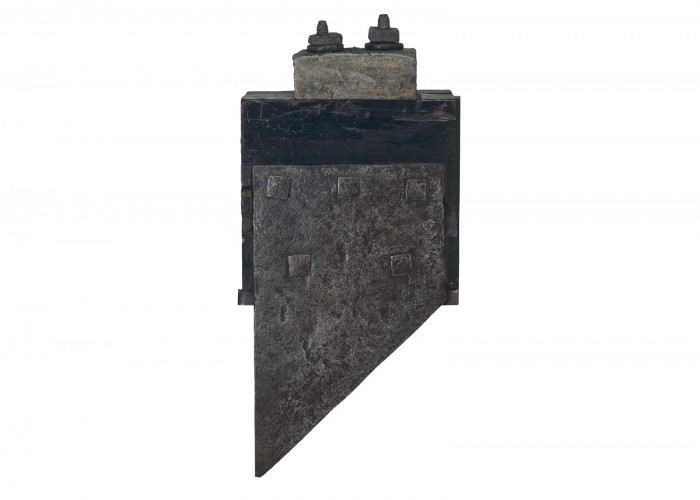French Guillotine Blade
Theme: Political Revolution, French revolution, Medicine, science and the people
The guillotine is best known as a method of executing those condemned to death during the French Revolution. Although it delivered a grisly end – by slicing off its victim’s head, death by guillotine was quick and humane. During the ‘Reign of Terror’ in France, as many as 40,000 people were executed by ‘Madame Guillotine’.
A version of the guillotine, called a ‘Halifax gibbet’, had been in use in England since as far back as the 1200s. A similar machine called ‘the Maiden’ was used in Scotland between the 1500s and 1700s. It worked by dropping a weighted blade down a wooden frame onto the victim’s neck, severing their head. Death would have been almost instantaneous. In 1791, a French doctor named Joseph-Ignace Guillotin proposed the machine be used in France, as a more humane method of capital punishment. The first execution was carried out on a highwayman in 1792 and the machine became known as the guillotine.
By that time, France was in the throes of revolution. The King, Louis XVI had been deposed and the country had declared itself a republic. The King was tried for treason and, in January 1793, beheaded at the guillotine. The execution of the King led to widespread unrest and the revolutionary factions began to fight amongst themselves, with the extremist ‘Jacobins’ eventually seizing control. The extremists set out to destroy their enemies. What followed became know as the ‘Reign of Terror’. Thousands of ‘enemies of the state’ were executed by the guillotine’s blade, and the mechanical decapitator came to stand for savagery and bloodthirstiness.
The executions were a popular form of entertainment and crowds gathered to watch.
Most executions took place in the Place de la Revolution (now the Place de la Concorde) in Paris. The executions were a popular form of entertainment and crowds gathered to watch. The market women, who had led their own successful protest against the establishment in 1789, famously sat by the guillotine and knitted, among other things, the red ‘liberty caps’ worn by revolutionaries.
The guillotine remained an official method of execution up until 1981 in France. The last person was guillotined in 1977.
Did you know..?
It is reported that the guillotine’s blade was so quick, heads continued to twitch and change expression even after they had been severed from the body.
Sources & acknowledgements
This object description and its related educational resources were researched and written by our team of historians and education specialists. For further information see the item’s home museum, gallery or archive, listed above.
- Enquiry Questions
-
Did you know..?
It is reported that the guillotine’s blade was so quick, heads continued to twitch and change expression even after they had been severed from the body.
-
Education overview
You can access a range of teachers resources related to this object and more on our education page.
Please also see our glossary of terms for more detailed explanations of the terms used.
-
Curatorial info
- Originating Museum: National Maritime Museum
- Accession Number: TOA0079
- Production Date: 1792
- Material: Steel, wood
- Size: 585 x 345 x 152 mm
- Original record
-
Use this image
- Rights Holder: © National Maritime Museum, London
- License Type: All Rights Reserved
Find it here
This object is in the collection of Royal Museums Greenwich







